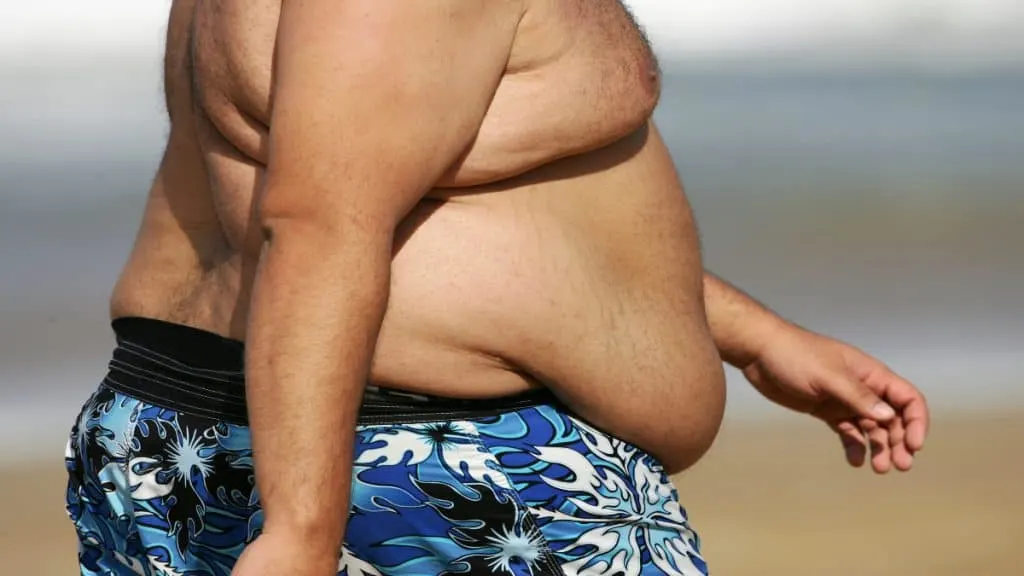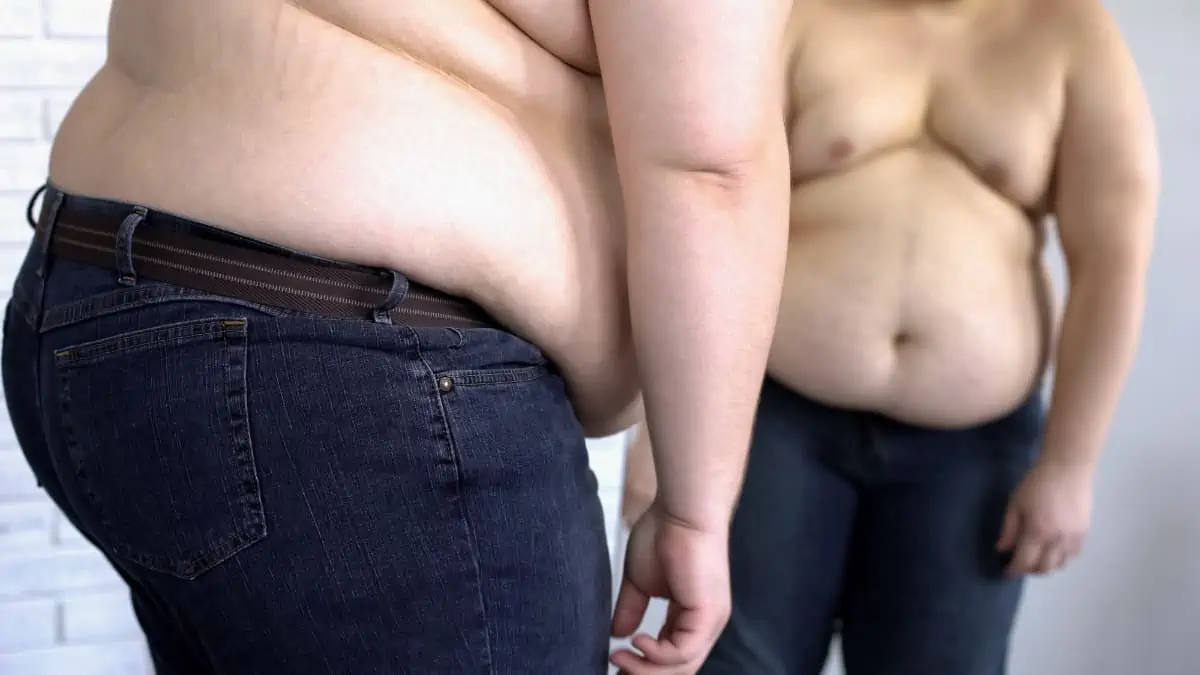A 75 inch waist and a 76 inch waist are much larger than the average American waist size. But you know that already.
So after going over the risks of having a 75″ waist (or a similarly sized waist), you’ll learn about some effective ways to safely and effectively slim your stomach.
The links below will take you to similar articles, where you can get other perspectives on reducing the size of your waistline.
What are the risks of having a 75 inch waist?

When assessing an individual’s risk for various diseases, health practitioners often use BMI.
However, since BMI doesn’t factor in the size of your stomach, research shows that measurements that take into account your body fat and abdominal obesity, such as waist circumference, are more accurate for assessing one’s risk of cardiovascular disease. [1]
As such, having an excessively big waistline is likely worse for your health than merely having a high BMI, especially considering that abdominal obesity results in an increased amount of visceral fat, which can accumulate around your vital organs and impair their function.
Over the short term, walking around with a 75 inch waist or a 77 inch waist can—quite literally—be a pain. This is because being obese often puts a lot of pressure on your joints, which can make physical activity challenging and sometimes impossible.
How can you lose your 75 in waist or 76 in waist?

The good news is that even if you have a 78 inch waist or a 79 inch waist, for example, you can likely still walk on your feet for short periods of time without putting debilitating amounts of strain on your body.
So while most cardiovascular exercise might be out of the question, you can always increase your calorie burn and promote weight loss by going for short walks or by standing up for extended periods of time.
Research even shows that exercise-induced fat loss—without calorie restriction—results in both an improvement in insulin resistance and a substantial reduction in obesity. [2] Now just imagine how much fat you could lose if you combined exercise with moderate calorie restriction.
Indeed, with the approval and supervision of your doctor, very low-calorie diets can be an effective way for obese individuals to lose weight fast because they typically result in losses of around 3-5 pounds per week—a weight loss which really starts to result in visible changes over the course of a few months. [3]
What benefits can you experience from slimming your 75 inch waist?

One of the first benefits that you’re likely to experience after shedding an initial bulk of your body fat is that you’ll feel much more mobile.
Tasks that once seemed impossible to you will now feel natural and smooth. You’ll be able to perform a wider variety of exercises, such as those that strengthen your lower body.
When you slim your 75 inch waist (or however big your stomach is, we’re just using 75 inches as an example), there will be less pressure on your joints, which will improve your quality of life.
It’s also widely known that losing weight reduces your risk of disease and improves a number of health markers, which can help you to live a longer, more fulfilling life.
The verdict on reducing your 75″ waist and 76″ waist

While having a 75 inch waist or a 76 inch waist obviously isn’t good for your physical health, there is a silver lining; you can experience much more substantial weight loss than other people.
Of course, at some point, as you become lighter, your fat loss will naturally slow down. But when you do start to see smaller changes, you’ll already have lost massive amounts of weight and will have significantly improved your physical (and perhaps also mental) health.
Humans love numbers, so there’s nothing quite like seeking the inches on the tape decrease and the numbers on the scale going down. Of course, even small improvements make a difference but don’t be surprised if, after consuming a low-calorie diet for a few weeks, you start to see subtle changes in the way that your body looks.
References
- Cepeda-Valery, B., Pressman, G. S., Figueredo, V. M., & Romero-Corral, A. (2011). Impact of obesity on total and cardiovascular mortality—fat or fiction? Nature Reviews Cardiology, 8(4), 233–237. https://doi.org/10.1038/nrcardio.2010.209
- Ross, R. (2000). Reduction in Obesity and Related Comorbid Conditions after Diet-Induced Weight Loss or Exercise-Induced Weight Loss in Men. Annals of Internal Medicine, 133(2), 92. https://doi.org/10.7326/0003-4819-133-2-200007180-00008
- WebMD. (2002, April 12). Weight Loss and Very Low-Calorie Diets. https://www.webmd.com/diet/low-calorie-diets

